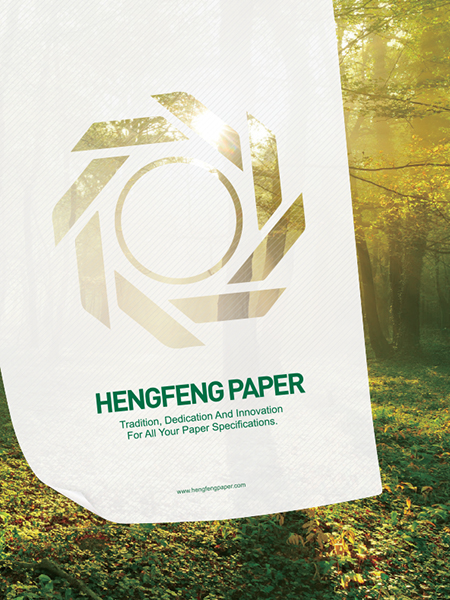
Investment and strategy analyst Erik Bloomquist assesses the coronavirus crisis’ impact on the nicotine business.
By Stefanie Rossel
It’s hard to exaggerate the impact of the coronavirus crisis. The pandemic has not only taken a tragic human toll, but it has also disrupted economic activity on a scale unprecedented in modern history. Supply chains have been disrupted, factories shuttered and workers sent home. Consumers, meanwhile, find themselves with plenty of time but reduced incomes. How will the nicotine industry recover from this calamity? Tobacco Reporter spoke with investment and strategy analyst Erik Bloomquist about the way forward.
Tobacco Reporter: Tobacco has a reputation for being recession proof or at least recession resilient. How do you expect the industry to fare during the coronavirus crisis?
Erik Bloomquist: I think the global nicotine industry will hold up well, especially relative to other industries and even in comparison to other consumer staples with the exception of grocery retailers and perhaps alcoholic beverages. The stock market has been relatively quick to appreciate this as shown by the material rebound in tobacco stock prices from the approximate March 23 low. Adjusting for the unique circumstances of the individual companies, some like Swedish Match are nearing all-time highs.
This robustness is driven by two structural factors that have always underpinned the investment case: the steady consumer demand for the products; [and the] steady need of governments for the taxes generated by the industry. Related to the former are the distribution channels for cigarettes in particular, which tend to be mostly through outlets deemed essential by many jurisdictions (e.g., gas station convenience stores).
With respect to the latter, governments everywhere are even more pressed for money than before the coronavirus/Covid-19 pandemic, and tobacco specifically is often a key reliable contributor to the government finances.
We have seen South Africa ban cigarette sales during its 21-day lockdown. How do you think such instant tobacco control measures will impact the industry’s recession resilience?
There are clearly some in the anti-tobacco and anti-nicotine “quit or die” camps that want to take advantage of the Covid-19 pandemic to advance their extreme agendas. While submitted before the coronavirus became a worldwide issue, one especially egregious example is the study “Towards Quantifiable Metrics Warranting Industry-Wide Corporate Death Penalties.” The paper argues that its study shows “[t]he results clearly warrant industry-wide corporate death penalties for both industries [tobacco and coal mining] in America.”
I would expect some in the anti-tobacco lobby to seize on this combined with concern about smokers’ potentially higher risk from Covid-19. Of course, the irony is that many of those in this camp remain adamantly opposed to tobacco harm reduction with lower risk products that consumers actually like, and they have attempted to conflate nicotine vapor users’ risks from conditions created by prior smoking with harm from nicotine vapor.
There are also intriguing studies and theories emerging about the potential beneficial effects of nicotine (via smoking or potentially vaping) in reducing susceptibility to the Covid-19 virus. The preliminary report by Konstantinos Farsalinos et al., “Smoking, vaping and hospitalization for Covid-19,” examining available Chinese and USA data provides support for that potential conclusion, though as reviewer Carl Phillips notes, “[t]he result of this analysis is, if true, enormously important. But there is so much uncertainty about the data and so much fundamental material missing from the analysis that we cannot conclude anything based on what is presented.” The analyses are particularly important as the conclusions are counterintuitive given the demonstrable harms associated with smoking and therefore likely greater risk to smokers from the Covid-19 virus.
My expectation is that measures that are temporary responses will likely remain temporary, driven by the key structural factors (consumer demand and tax needs). For example, the South African ban on cigarette sales will only exacerbate the consumer demand for black market cigarettes, which was already a severe problem. Enforcement of the lockdown in the townships will become difficult as people’s livelihoods are threatened. My guess is that the South African government will belatedly recognize that banning legal sales does not push all consumers to quit and so accelerates a shift to the black market, not to mention the incentive to buy cheaper products when incomes are slashed.
In light of such tobacco control moves, how do you expect smokers’ behavior with regard to consumption to change in this period of crisis?
I think smokers may reduce their consumption, and some will no doubt use the event as a catalyst to quit. However, the proportion of consumers leaving the category may be offset by those returning to smoking, whether as a way to alleviate stress or because their preferred alternative (an open system vapor device and nicotine liquid) is no longer easily available.
How do you think the vapor sector will develop?
The outlook for nicotine vapor within global nicotine is more complicated since its distribution is more varied with the open systems largely sold through dedicated nicotine vapor shops, some of which are not allowed to remain open, and it as a segment has suffered from increasing uncertainty by consumers about the relative risk benefit versus smoking cigarettes and additional potential Covid-19 risks.
The pandemic and resulting severe, fast economic slowdown caused by government mitigation measures will put further pressure on the weaker players across global nicotine, particularly in the less established and consolidated nicotine vapor space. Independent nicotine vapor shops not only may have restrictions on the ability of their consumers to purchase from them but on the supplies needed to sustain the business with such a large proportion sourced from China and the ability to restore product pipelines unknown at this point in time.
How do you think the coronavirus crisis will impact the transition of smokers to less hazardous nicotine-delivery products such as vapor devices?
I think the pandemic and resulting effects on nicotine vapor offerings, especially those not offered by the tobacco majors or larger nicotine vapor firms, will reduce the transition by consumers to lower risk products. One of the most disappointing results of years of misinformation about the relative risk of nicotine vapor reduced-risk products [RRPs] is the increasing proportion of consumers who believe them to be as harmful as cigarettes—a belief exacerbated by the U.S. Centers for Disease Control and Prevention’s [CDC] poor performance in the 2019 severe lung injury THC vape vitamin E acetate contamination event. This misperception has demonstrably occurred in the USA and U.K., and my suspicion is that similar shifts in consumer belief, to some degree or another, have taken place across the world.
A Euromonitor survey released in March 2020, “Exploring the Global Nicotine Landscape,” showed that perceptions of the lower relative risk of nicotine vapor by both users and nonusers of nicotine products were declining, i.e., that nicotine vapor was as harmful or more harmful than smoking. The survey also showed the largest driver globally for decreasing or ending nicotine product consumption remained to improve health; if the utility of RRPs in that goal is minimized or nonexistent while the net benefits of continued nicotine consumption remain—likely through cigarettes—it seems likely that many people will continue to smoke.
How do you anticipate the global nicotine vapor sector to develop under the current circumstances? Will the crisis be the final blow to the fledgling industry whose image and sales already largely suffered from the “vaping sickness” in the U.S.?
The global nicotine vapor sector is under the most pressure it has ever experienced with the combination of the Covid-19 pandemic effects, increasing restrictions or bans in many jurisdictions and deteriorating consumer perceptions. Despite this pressure, I expect it will survive, albeit after a period of contraction, consolidation and retrenchment.
In my view, the most important driver of this is the regulatory environment, and the outlook there is challenging with the U.S. Food and Drug Administration’s [FDA] determination to press ahead with its PMTA [premarket tobacco product application] process for nicotine vapor and the World Health Organization’s [WHO] unfortunately hostile stance toward tobacco harm reduction [THR] and RRPs. Since they are the two most influential health bodies globally—sadly the Public Health England or broader U.K. public health stance on nicotine vapor has not been given as much credence—regulatory restrictions are likely to remain or increase.
Offsetting this hostility is consumer demand and recognition that in fact RRPs are lower risk than smoking cigarettes and so a better alternative for those for whom nicotine is beneficial. With internet access and webs of THR advocates around the globe, consumers can learn the truth and select lower risk products. The absurd element is that so many of the “public health” establishment are trying to prevent that transition and so entrench cigarette consumption.
What will the tobacco industry look like a year from now?
Broadly speaking, dividing global nicotine into tobacco—dominated by cigarettes—and nicotine vapor—whether the aerosol is from heated tobacco or vapor, from an open or closed system—I believe the tobacco businesses will not look materially different. In contrast, I expect nicotine vapor to be smaller in consumption and sales and more consolidated with fewer larger players surviving, particularly in the USA, as the one-year premarket tobacco product application review period ends—for now in September 2021—and the FDA begins enforcement.
Shops selling open system nicotine vapor devices and liquid are likely to be especially hard hit by the combination of retail opening restrictions, restrictions on product—e.g., the New York state retail and online sales ban passed at the beginning of April, which prohibits the sale of vapor products in flavors other than tobacco—and lingering consumer concern about risk, whether from the spate of severe lung injury cases or from concerns about vapor and Covid-19.
More specifically, I expect a couple things are likely to become evident.
Regulation/taxation will remain the most important driver of the shape of the industry, not least in the USA even with the PMTA submissions for electronic nicotine-delivery systems [ENDS] delayed until September 2020. This importance is also emphasized by the U.S. Federal Trade Commission’s complaint against Altria’s purchase of a 35 percent stake in Juul Labs. Such influence matters in part because of its effect on consumers’ perceptions and behaviors, for instance, the further damage the CDC’s response to severe lung injury cases—also known by the misnomer EVALI—did to the perception of nicotine vapor and because it shapes and limits the offerings for consumers.
There does appear to be some good news with some countries, such as Italy, France, Spain and Switzerland, recognizing with the help of THR advocates that closing nicotine vapor outlets would force consumers back to higher risk cigarettes. However, there are countervailing examples, such as in New Zealand where some advocates suggest that vapor be “nicotine or chemical free” or even in the U.K., which has not designated nicotine vapor shops as essential and open for in-person purchases, though online and home delivery options remain.
The criticism of PMI’s [Philip Morris International] donation via its Greek subsidiary of 50 ventilators in response to a request by the government to [the] industry by traditional anti-tobacco/anti-nicotine advocates implies limited scope for improvement in the view of tobacco companies as inherently and eternally unethical for a significant proportion of the tobacco control community.
Which effects are we likely to see in the market due to the pandemic?
Although overall demand for nicotine products is unlikely to decrease by much, the severe and sudden cut to many people’s incomes will likely have a secondary effect—downtrading.
The downtrading dynamic—from premium brands to lower price brands or to RYO/MYO tobacco in some markets or to the black market in other jurisdictions—is likely to be particularly acute in cigarettes since in many countries, more of those consumers tend to be in lower socioeconomic strata and so if [they are] employed in Covid-19 restricted occupations, [they are] especially affected.
The hit to consumer disposable income could be offset to a degree in countries like the USA where petrol is a significant household cost to the degree the current oil price war and 20-[year] to 30-year lows are passed through to retail customers. But on balance, I expect the downtrading effect to be larger and longer lasting than relief at the petrol pump or in household energy prices. In “dark” markets, the downtrading may exacerbate the erosion of premium brands, though the tobacco majors retain enviable pricing power.
Since the cost of nicotine vapor is usually less—often much less with open systems—than cigarettes and seen as a viable substitute by many, downtrading pressure would usually, ceteris paribus, push consumers toward vapor options. In my view, the negative perceptions and constrained availability likely mean such a transition will be limited.
Assistance from governments may modestly mitigate the financial pressure, but restoring consumer disposable income will require employment recovery. Only then is downtrading likely to slow or stop. Recovery of pre-Covid-19 employment levels implies [that] the shift to cheaper products—whether legal or illegal—will probably last well beyond the containment of the pandemic.
The tobacco industry recently expanded into the cannabis sector. How do you expect this industry to develop in the coronavirus crisis?
The cannabis sector has lost its luster, with the stocks down significantly over the last 12 months—U.S. names down around 40 [percent] to 75 percent, Canadian names down around 60 [percent] to 90 percent—in part driven by oversupply for the prominent listed Canadian companies. The coronavirus pandemic is forcing cannabis legislation off the agenda for the time being, for example, New York’s governor stating on March 31 [that] they would not be moving forward on legislation as previously anticipated in January 2020. As well, there are some company-specific problems, such as the revenue overstatement at Cronos in which Altria is a $1.8 billion investor. The mismatch between legal demand and supply suggests there may be consolidation among the Canadian-listed cannabis suppliers too.
That said, Washington, Oregon, California, Colorado, Illinois, Michigan, New York, New Jersey, Ontario and Quebec have allowed their cannabis retail stores to remain open during the pandemic, so once legally established, the trade appears resilient and politically insulated. Until the pandemic is brought under a semblance of control, legal market development in the USA may be impeded.




